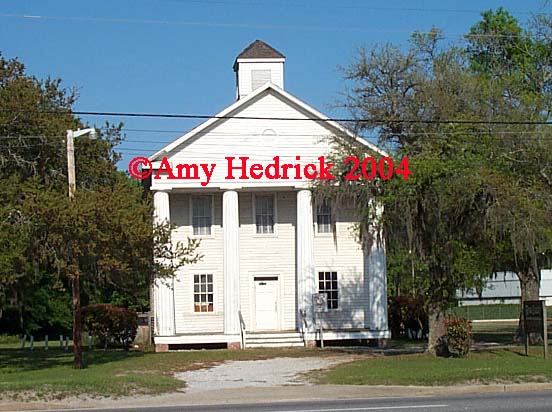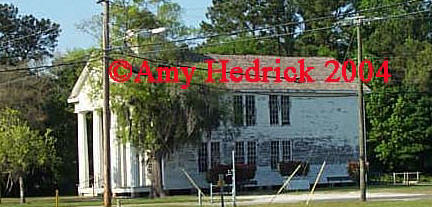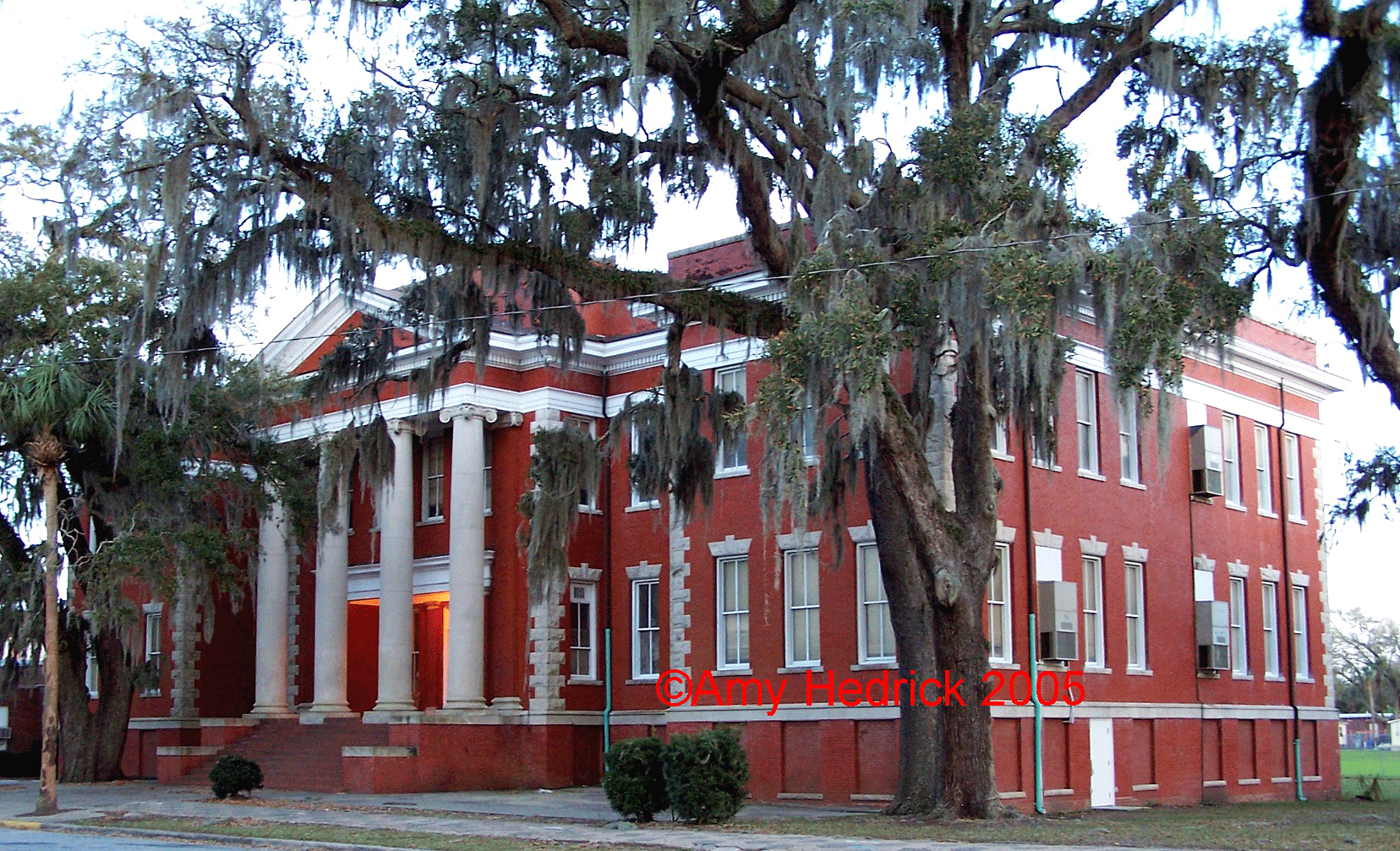|
Reunions
Class of 1967 Email Archive
Class Photos
Class of 1910
Class of
1935
Class of 1937
Class of
1941
Class
of 1943
Class of 1958
Diplomas
Ralph Macbeth Smith
(1923)
Dramatics
1930 Premiere
Presentation
1931 The Sunbonnet Girl
Benefit Athletic Fund
History
Annex Building Fire
Jane Macon's Class & Grade Books
Introduction
1919-1920
1920-1921
Miscellaneous
1916
Graduation Exercises
1922 Bullet
School
pamphlet for parents
1923
Graduation Exercises
1930
Graduation Exercises
1931
Graduation Exercises
1932
Graduation Exercises
1941
Graduation Exercises
1941
Commencement Exercises
Yearbooks
1922 Cumtux
1930 Littoral
|
 Commissioners
were appointed on 1 February 1788 to sell lots in Brunswick and the
proceeds were to go towards the erection and maintenance of an Academy.
Henry Osborne, George Handley, Christopher Hillary,
John Braddock, William Stephens, John Houston, Gen.
Lachlan McIntosh, and James Seagrove were appointed as the
commissioners. Commissioners
were appointed on 1 February 1788 to sell lots in Brunswick and the
proceeds were to go towards the erection and maintenance of an Academy.
Henry Osborne, George Handley, Christopher Hillary,
John Braddock, William Stephens, John Houston, Gen.
Lachlan McIntosh, and James Seagrove were appointed as the
commissioners.
A town Commons was designated and a
commission was set up to sell or lease these lots and to apply this money
to the Academy also. George Purvis,
Richard Pritchard, Moses Burnett, John Piles, and
John Burnett were the commissioners elected.
The removal of the county seat from
Frederica on St. Simons Island to Brunswick necessitated the need for a
courthouse and jail. Another commission was formed to sell 500 acres of the
Commons and half of the proceeds would go for the courthouse, and the other half
to the Academy. The Piles tract and the Hart tract lying south of
Old Town, the McKenzie tract (now Habersham Park), the
Clubb tract (now Dixville), the Wilson tract (now Windsor Park),
Urbana, and Mayhew were all part of the land to the south and east of the
original Brunswick boundaries sold in this venture.
In 1814, the Commissioners of the Town Commons and the Commissioners of the Academy were combined and William Page, Henri duBignon, George
Dupree, Leighton Wilson, and William Houston were elected. The
school building was erected in 1819 on the corner of Reynolds and L Streets and
the land was called the Academy Range.
Academy were combined and William Page, Henri duBignon, George
Dupree, Leighton Wilson, and William Houston were elected. The
school building was erected in 1819 on the corner of Reynolds and L Streets and
the land was called the Academy Range.
In 1819 [sic], the old Academy was abandoned
and sold for $10,000 and that combined with the proceeds of the sale of New Town
in 1835 totaled $26,000, a new building was built on Hillsborough Square,
completed in 1840, and in 1915 was moved to Sterling and used as a school for
African-Americans and is still standing today. The school building is now
empty, the windows and doors are boarded up, a cyclone fence surrounds.
There is talk about moving this building back to the Glynn Academy Campus, as
it's being so far out in the county, it will not get the attention it needs, and
deserves.
Note: Glynn
Academy was chartered in 1788, three years after the State University and has provided public schooling until the
present day. Chatham, Richmond, and Glynn Counties were the only counties to have
Academies still in existence today.
[NOTE FROM WEBMASTER: The above
paragraphs were typed verbatim from notes written by Margaret
Davis Cate that were in the possession of Jane Macon
and given to Wallie (Konetzko) Burney whose son
Stafford Burney allowed me to type for this website. I can not
attest to their accuracy or validity and apparently now need to post
"warnings" on transcriptions because some people do not seem to understand
what "transcription" means. Remember to always reference the originals
when reading a transcribed document (if you can), and remember, [brackets]
are used to denote text not original to a document--Amy Hedrick].
The following "history"
was written by Ms. Jane Macon
Glynn Academy 1788
A Brief History of Glynn Academy
Clayton, Georgia July 2, 1952
Aside
from the fact that the operation of Glynn Academy has been uninterrupted
throughout its entire existence, the history of this Georgia high school
shows it to be quite unique in at least two other respects: First, it is
one of the three oldest high schools in the State of Georgia. Second, it
is probably the only school in the state which throughout the year has
consistently furnished free education to its boys and girls.
The first constitution of
Georgia adopted in 1777 provided for the state as superior system of
public schools. Had its provisions for education not been rescinded by a
later Constitution, Georgia’s rank in the educational world would today be
much higher than it is. Each county of the state was to have its own
Academy in which children were to be taught through college preparatory
grades. At the head of all the county Academies was to be the State
University under the control of the Senatus Academics. Within a few years
after the adoption of the constitution, the plan was
 put into operation.
The University of Georgia first of all State Universities to be chartered
(1785), and some twenty County Academies were soon functioning. Among
these early Academies was that of Glynn County, which with Richmond
Academy and Chatham Academy (now called Savannah High School) alone
survives – the three high schools in Georgia. put into operation.
The University of Georgia first of all State Universities to be chartered
(1785), and some twenty County Academies were soon functioning. Among
these early Academies was that of Glynn County, which with Richmond
Academy and Chatham Academy (now called Savannah High School) alone
survives – the three high schools in Georgia.
Revenue for the
establishment and maintenance of these Academies was provided for in this
same Constitution of 1777. The lots within the county seat were to be sold
and the town commons surrounding it were to be rented or leased for a
period of ninety-nine years, all income to be applied to the support of
the educational setup. The newly laid out town of Brunswick, consisting of
383½ acres was surrounded on three sides by a large acreage of commons, so
there was ample revenue for the support of schools. Until 1911 these town
commons continued to supply revenue for educational purposes. Then the
State Legislature empowered the Board of Education of Glynn County,
successor to the Commissioners of 1788, to relinquish all claim to the
commons, giving fee simple titles to the holders of all lots. In lieu of
income lost by this change, the Board was given the right to levy taxes on
city property. Thus, throughout its entire history Glynn Academy has
provided free schools to all boys and girls.
Other schools in the
state were not so fortunate. The State Constitution which replaced that of
1777 did not recognize education as a duty of the state. Accordingly only
those children whose parents acknowledged themselves as paupers were to be
educated at state expense and for them “Poor Schools” were provided. Glynn
Academy organized and functioning under the provisions of the Constitution
of 1777, continued throughout the years to give free education to all its
children – probably the only school in Georgia with this enviable record.
Now for a hasty view of
Glynn Academy from its founding down to the present.
Although Brunswick was
laid out in 1771, her population was so depleted during the American
Revolution that it was not until seventeen years later that application
was made for a county academy. On February 1, 1788, the General Assembly
of Georgia passed an act appointing ten Commissioners and directing them
to survey and sell lots in Brunswick and to use the money realized
therefrom for the erection and maintenance of an Academy. Thus came into
existence the first Glynn Academy, one year before George Washington took
oath as first president of our republic.
Unfortunately, we have no
record of this first building, even its location being unknown. But that
it did exist is indicated by the fact that during the next quarter of a
century, the Commissioners were empowered three times to sell lots in
Brunswick and to lease town commons for its maintenance.
In 1819 was erected the
first Glynn Academy of which we have record. Located on what is now the
corner of Ellis and L Streets in the center of a five acre tract known as
Academy Range, this building cost ten thousand dollars and was in use for
more than twenty years.
In 1840 three hundred
acres of commons in that part of Brunswick, now known as New Town, having
been sold a part of the sum realized was applied to the construction of a
new Glynn Academy which for more than half a century was the only public
school building in Brunswick. It was situated near the southwestern corner
of the northern half of Hillsborough Square, abutting Egmont Street which
it faced.
It was in this building
that a great tragedy occurred as a result of a political quarrel over the
control of town commons. Col. Carey W. Styles, a candidate for
mayor of Brunswick, in a political meeting held in the Academy in December
of 1857, accused Jacob Moore, Glynn County’s representative in the
State Legislature, of having acted dishonorably in acquiring for himself
and his friend, James Houston, mayor of Brunswick, control of these
public lands. Pistols were drawn and in the quick exchange of shots that
followed, Moore was killed. Styles was never brought to
trial and was triumphantly vindicated two months later by his election as
mayor. In 1866 this same Col. Styles, having moved to Atlanta,
became the founder of “The Atlanta Constitution”.
This Glynn Academy on
Hillsborough Square was superseded in 1889 by a large brick building
facing Mansfield Street and with its grounds occupying the entire city
block bounded by Carpenter, Wolfe, Monk, and Mansfield Streets. The former
Building continued to be used for various school and civic purposes until
1915 when it was moved to Sterling for use as a school for Negroes.
For more than a century
the name “Glynn Academy” embraced all grades of the public school from
beginners until graduation. But in 1909 the large enrollment of pupils
made it necessary to erect another building. It was then that the high
school grades were removed to a new and still larger brick building on the
southern half of Hillsborough Square, facing Mansfield Street. With them
went the name “Glynn Academy”, leaving the old building to be occupied by
the lower grades under the name “Glynn Grammar School”. Much later when
Sidney Lanier Grammar School was building in 1936 (and became a part of
Glynn Academy in 1972), this old building completely renovated and greatly
improved, became an annex to the present Glynn Academy.
As the school population
of Glynn county continued to increase, new quarters were imperative. At
the conclusion of World War I, it was decided that a new school building
be erected as a memorial to the men of Glynn County who participated in
that struggle. A bond election provided the funds and the present
building, designed to include a memorial auditorium, administrative
offices and an enlarged Glynn Academy was erected. The architect,
Hendrik Wallin, in carrying out the memorial idea, used as his motif
the architectural design of the celebrated Louvain Library in Belgium,
whose destruction by the Germans so infuriated the civilized world. The
resulting building – a beautiful and dignified structure was erected on
the northern half of Hillsborough Square, Glynn Academy facing Mansfield
Street on the south and the Memorial Auditorium facing the north, its
entrance being the center of Norwich Street which it blocks.
Since September, 1923,
this memorial building has been the home of Glynn Academy, but so great
has been the increase in students and so numerous have been the courses
added to the curriculum that several additional buildings are now in use.
They are the A.V. Wood Gymnasium, erected in 1928, the renovated Glynn
Academy of 1889, now known as the “Annex”, a large classroom building
erected on Wolfe Street during World War I, and wood and machine shops.
From this sketchy survey
of growth of Glynn Academy throughout its long existence, it is evident
that the school has at all times been unfailing in its services to the
children of Glynn County and that at no time has it failed to move
forward.
May it continue
this proud record!
[NOTE FROM WEBMASTER: The above
paragraphs were typed verbatim from notes written by Jane Macon
that were given to Wallie (Konetzko) Burney whose son
Stafford Burney allowed me to type for this website. I can not
attest to their accuracy or validity and apparently now need to post
"warnings" on transcriptions because some people do not seem to understand
what "transcription" means. Remember to always reference the originals
when reading a transcribed document (if you can), and remember, [brackets]
are used to denote text not original to a document--Amy Hedrick].
|


 Commissioners
were appointed on 1 February 1788 to sell lots in Brunswick and the
proceeds were to go towards the erection and maintenance of an Academy.
Henry Osborne, George Handley, Christopher Hillary,
John Braddock, William Stephens, John Houston, Gen.
Lachlan McIntosh, and James Seagrove were appointed as the
commissioners.
Commissioners
were appointed on 1 February 1788 to sell lots in Brunswick and the
proceeds were to go towards the erection and maintenance of an Academy.
Henry Osborne, George Handley, Christopher Hillary,
John Braddock, William Stephens, John Houston, Gen.
Lachlan McIntosh, and James Seagrove were appointed as the
commissioners.